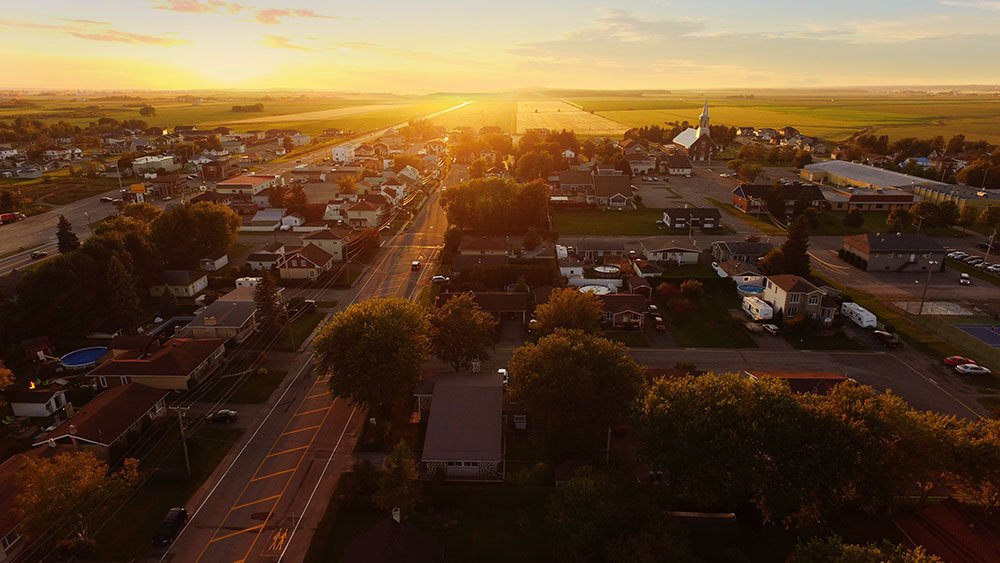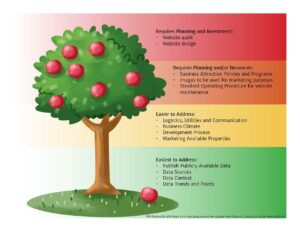Growing up, I remember how the latest trends seemed to take extra long to show up in our small town. Particularly fashion, hairstyles, music, and even social issues related to crime, drugs, violence took their time to reach us. (We won’t mention how long ago I was “growing up” in these small towns.) At that time, it seemed like we were a bit insulated, which was good and bad. Time and technology have sped up the adoption of fashion, hairstyles, and music in rural communities. They have an impact on how rural communities respond to economic challenges created by a variety of factors.
Economic challenges such as businesses having to shut down due to the COVID-19 pandemic impacted every community regardless of size. Some may have felt it more than others, but every business felt the impact of business closures, supply chain shortages, statewide mask mandates, work from home, school closures, fear, illness, or having to quarantine. This leads me to question whether rural communities have a more significant challenge overcoming adversity. Are they more, or less resilient than larger metropolitan areas?
We would like to argue rural communities can be just as, if not more resilient than larger metros. However, there are a few key elements which must be present, and it is not easy work. Here are our five keys to resilience for rural communities.
1. Focus on Business Retention: It cannot be overstated; business retention is the single most important task to ensure business success in your community. As an economic development professional, you must be in touch with the needs of businesses in your community. Make sure they know you are able to provide them with financial or technical assistance.
2. Foster a sense of community: Recently we spoke with a municipal staff person who shared that their community did not lose one business as a result of the economic challenges created by the pandemic. He attributed business stability in his community to a connectedness and supportiveness that the community bestowed on its businesses. Residents rallied around the locally owned and operated shops and restaurants to ensure their success through the worst of times. In smaller communities, there may be a stronger loyalty to local businesses because people know each other better. They see each other in their shops, restaurants, church, schools, sporting events, and community events. There is high value in the connectedness which comes from living and operating a business in a small community.
3. Design a safety net: Research suggests that rural areas can benefit from fostering a vibrant small business and entrepreneurship ecosystem. Rural small businesses generate wealth that stays in the community, builds local leadership, and even contributes to public health.
Create and convene a supportive network of technical services to advise and coach startups. This network may include bankers, insurance agents, accountants, attorneys, marketing professionals, and others. Often Chambers of Commerce will pull together professionals/members who are open to assisting small business owners with questions about everything from tax issues, Human Resources, preferred vendors, and training opportunities.
If you have space available for coworking or business incubation, promote it through all professional networks, appropriate social media channels, Rotary, Chamber events, and even in casual settings such as brew pubs or the local tavern.
4. Create networking opportunities for existing businesses: Businesses who know of one another can rely on their peers when they need advice or a solution to a particular challenge. Even if no one has a solution, together they can brainstorm and manage on the fly. For example, during the pandemic when supply chains started breaking down for lack of inventory, knowing where their peer may have sourced a particular item a business needed, or submitting a bulk order together likely helped out a few businesses. Tackling an employee shortage by sharing talent sources or creating shared positions between companies with like needs is another creative way to benefit from networking with other businesses in the community. Cross-promotional opportunities can also be developed through business networking events.
5. Identify one business champion: Whether your community has a dedicated economic development staff person, a Chamber of Commerce Executive Director, or those responsibilities go to the top elected official (Mayor or Village Administrator), there needs to be a designated business champion. If there is currently a vacancy in that role, consider hiring a third-party consultant in the interim. There is not a perfect model, but every community needs at least one person who can connect with, provide resources to, and advocate for the business community.
These strategies are meant to be implemented consistently over time. Like economic and community development, resiliency is highly dependent on relationships. Knowing who to turn to in good times and challenging times provides confidence, peace and strength to local business owners and operators.






